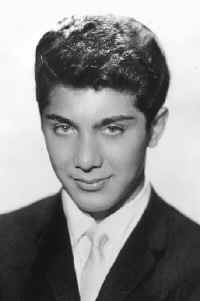 Paul Anka |
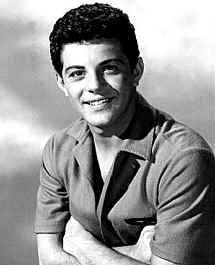 Frankie Avalon |
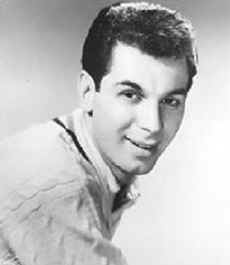 Freddy Cannon |
 Bobby Darin |
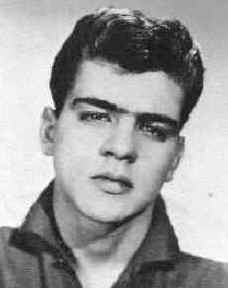 Fabian |
 Ricky Nelson |
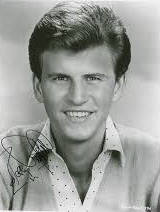 Bobby Rydell |
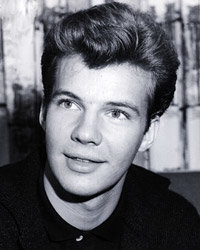 Bobby Vee |
To many avid rock historians, the teen idols --
who were firmly entrenched on the top of the charts between the
death of Buddy Holly and the rise of the Beatles -- represent the
greatest threat to rock's survival that the music ever weathered.
Wimpy, overwhelmingly bland and safe, their connection to rock
& roll was often tenuous, and their commercial ascendancy has
even been discussed as a conspiracy by the music business and
sundry other moral authorities to rob rock & roll of its
vitality.
In retrospect, that seems fairly unlikely, though there's no
doubt that the more conservative elements of the entertainment
industry and the status quo as a whole felt more comfortable with
these performers. Owing as much or more to traditional Tin Pan
Alley and middle-of-the-road values than pure rock & roll,
their massive success nonetheless didn't come close to stamping
out the forces that gave birth to the explosive soul, surf, and
British Invasion sounds that reclaimed the airwaves after only a
few years.
"Teen idols" were by no means a phenomenon that began
with the rock & roll era; bobbysoxers had been pining to the
sound of mainstream pop crooners for a good decade or more before
Elvis hit the scene. As far as rock was concerned, the original
teen idol was Pat Boone, whose first hits were bowdlerized
versions of classic rockers by Little Richard and Fats Domino.
The first two teen idols to achieve mass success after Boone
could hardly have possibly defined the polar extremes of the
genre better. There was Paul Anka, whose early hits were
mainstream ballads with mild rock & roll trimmings, and who
exemplified the style at its most operatic and melodramatic. Then
there was Ricky Nelson, whose success was virtually guaranteed by
his popular weekly TV series, and whose rockabilly records were
better than they had any right to be.
The Philadelphia teen idols of the late '50s -- Bobby Rydell,
Frankie Avalon, and Fabian -- patterned themselves after Anka
much more than Nelson. Recorded on the local Cameo-Parkway,
Chancellor, and Swan labels, they were launched into national
success with regular appearances on American Bandstand, hosted by
Dick Clark, who sometimes held financial interests in the record
companies of the singers he pushed in this manner. Rydell, at
least, could sing; few would contest that Avalon and Fabian were
promoted more on their appearance than their limited vocal
abilities, and both would move into movies and television work as
their chief focus after their initial musical success.
It worked the other way around as well, of course; established
teenage television stars with meager vocal abilities were hustled
into recording studios to capitalize on their screen images.
Ex-Mouseketeer Annette Funicello became one of the first big
female teen idols in this fashion, and Ed "Kookie"
Byrnes, Connie Stevens, Johnny Crawford, James Darren, and
Shelley Fabares also got onto the hit parade after they were
already established TV performers. Artistically, this was the
weakest wing of the teen idol genre; unsuited for singing in the
first place, their material often sank to the level of drivel,
with a few unexpected choice items thrown in, usually from Brill
Building songwriters.
A great many teen idol singers had one or two big hits in this
era without establishing a long recording career. Mark Dinning
(Teen Angel) and Ray Peterson (Tell Laura I Love Her) capitalized
on the short-lived vogue for teen death melodrama; Troy Shondell,
Johnny Tillotson, Brian Hyland, and even a young Tony Orlando
were merely some of the more successful of thelegions of young
faces who were packaged for the young, middle-class, white,
predominantly teenage audience in this era.
Then there were the singers who happened to be packaged as teen
idols, but who were probably good enough to have succeeded
anyway. Dion, Gene Pitney, and Del Shannon, as well as Ricky
Nelson, all fall in this category; their music sometimes
contained the melodramatic hallmarks of the teen idol style, but
they were genuine pop/rock innovators each and every one, and
have too often been dismissed as superfluous by listeners more
concerned with these performers' images than their actual
accomplishments.
And there were also teen idols whose music was obviously a
watered-down version of early rock & roll forms. Bobby Vee
was a transparent Buddy Holly clone, though much softer; Ral
Donner was the most accurate Elvis Presley soundalike, though he
took after Elvis's pop/rock ballads rather than the King's
rockers; and Johnny Burnette had a brief career as a mainstream
teen idol after moderate success as one of the best early
rockabilly singers. Finally, there was an entire wing of British
teen idols, although they had virtually no success in the States.
Cliff Richard was by far the biggest, followed by a stable of
singers with unlikely movie-star names, most managed by British
impresario Larry Parnes. Billy Fury was the best of them; Adam
Faith, John Leyton, Heinz, Helen Shapiro, and others were also
big in their homeland before they largely sank into irrelevance
after the rise of the Beatles in 1963 by......... Richie
Unterberger
Many teen idols of the 1950’s weren’t that much different than the ones today. Popular singers like Frankie Avalon made millions and were able to afford things like fast cars, luxury motor yachts, and mansions.
![]()